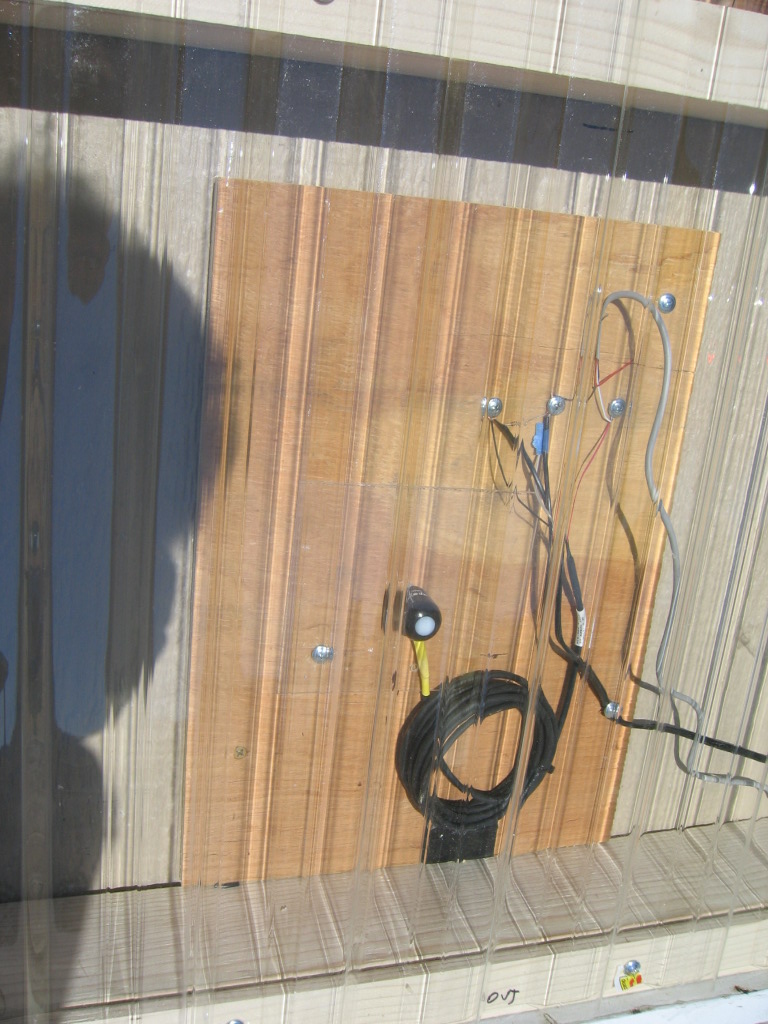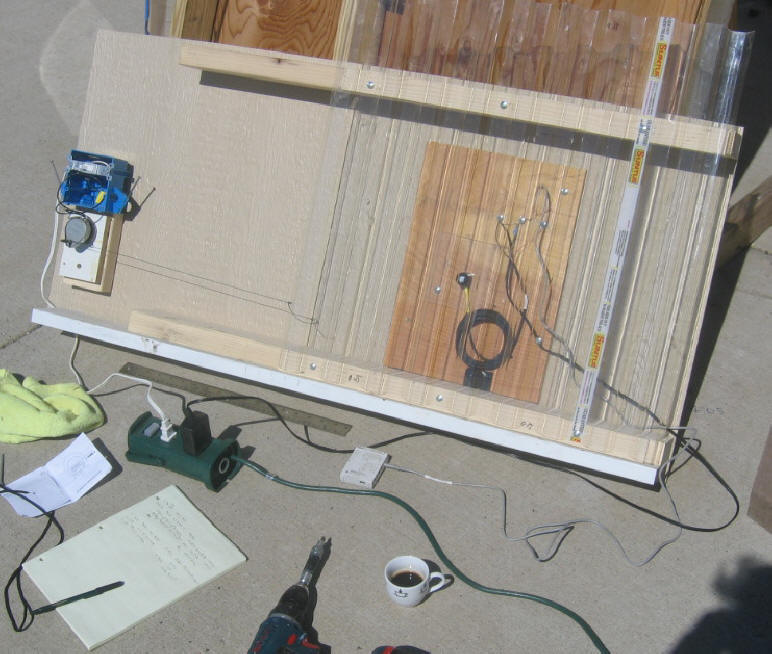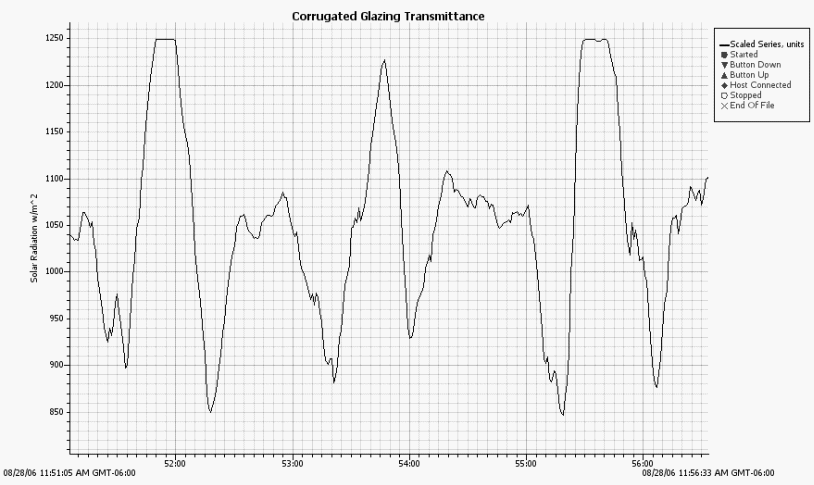
Search
The Renewable Energy site for Do-It-Yourselfers
Corrugated Glazing
Transmittance
|
The question came up in the Yahoo
Home Energy discussion group as to whether corrugated glazing (e.g. SunTuf
polycarbonate glazing) has a lower transmittance to light because of the
corrugations. The small test below tries to answer this question.
When the sun shines through
corrugated glazing onto a surface (such as an absorber in a solar collector), it
produces a pattern of dark and light lines in the direction of the corrugations.
See picture below. The question is, does this pattern of dark and light
bands reduce the light transmission compared to flat glazing?
|
|

Picture shows the pattern of light
and dark vertical bands that sun shining through corrugated glazing produces.
If you measure the brightness in the
dark lines, it is down to about 75% of the no glazing radiation level, but the
radiation in the bright lines is about 12% higher than the no glazing solar
radiation. What's really needed is to measure the radiation level
over one full corrugation cycle, and see what the average radiation is for the
full corrugation cycle. To do this, I set up a 1 rpm motor that could tow
the corrugated glazing over the sun sensor location at a low speed with the
sensor set to measure the sun at 1 second intervals. See the picture
below.
The 1.2 rpm motor tows the glazing at
a rate of 0.78 inches per minute over the sensor taking samples at 1 second
intervals -- so, a sample every 0.013 inches.

The small, synchronous motor on the
left tows the corrugated panel over the sun sensor, which is the thing that
looks like a white eyeball in right half of picture. This run was done for
near 90 degree incidence.
The graph below shows the radiation
level on the sun sensor for a little over one full corrugation cycle (3 inches).
The solar radiation level with no glazing in place was measured as 1115 w/m^2.
So, the dark bands are down about 25% from this, but the light bands are
actually brighter than the sun.
A hand integration of the light
levels for one full corrugation yields an average radiation level of 1044 w/m^2.
So, transmittance = 1044/1115 = 93.6%
This is about the same as is quoted for flat polycarbonate panels, so it looks
like the corrugations exact little or no penalty on the average transmittance.
I also measured the transmittance of
a piece of 1/8 thick clear Acrylic that I had on hand, and it came out 1055
w/m^2 -- so, about 94.6% -- about the same.

Graph showing radiation levels as
corrugated glazing is towed slowly across sun sensor. Time from about 52
minutes to about 55.8 minutes is one full corrugation cycle. The
corresponding full sun reading is 1115 w/m^2, the reading with a 1/8 inch thick
of clear Acrylic is 1055 w/m^2. The average reading for the full cycle of
the corrugation is 1044 w/m^2.
I repeated this 3 times with near 90
degree incidence with similar results.
Also tried it with about 45 deg
incidence -- also with similar results. For the 45 degree incidense case,
the corrugated polycarb actually did a little better than the clear Acrylic
panel.
I think that another good question
to ask would be if the Twinwall or Triplewall Polycarbonate panels (which also
show a distinct pattern of dark and light bands) would give the same results, or
whether they lose some transmittance??
-------
The sun sensor is an Apogee PYR
Pyranometer that is calibrated to measure the full solar spectrum.
http://www.apogee-inst.com/pyr_spec.htm
Tambient was 78F, elevation 5000 ft,
Bozeman, MT
Gary 08/28/06

